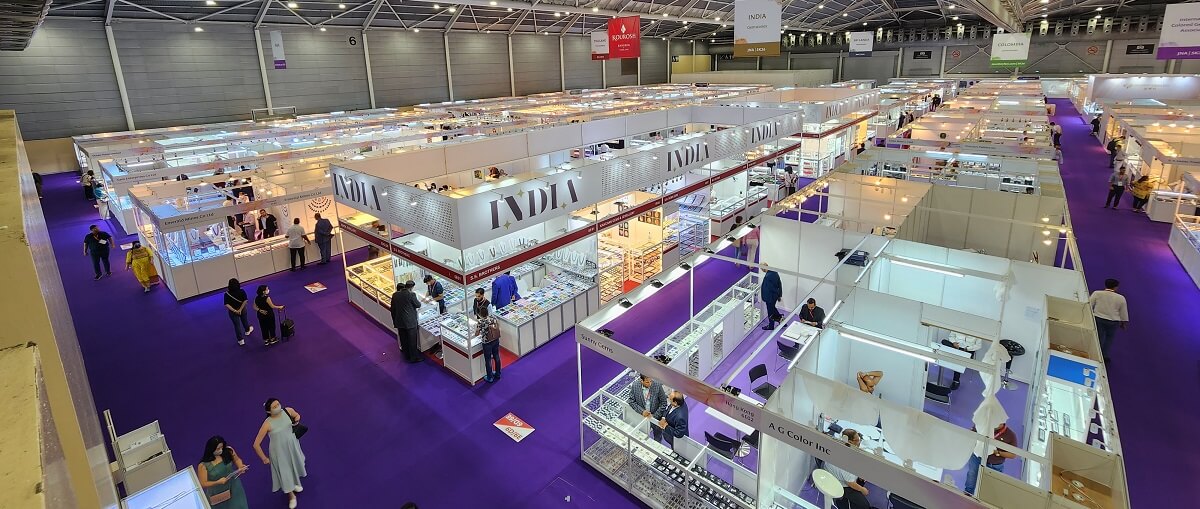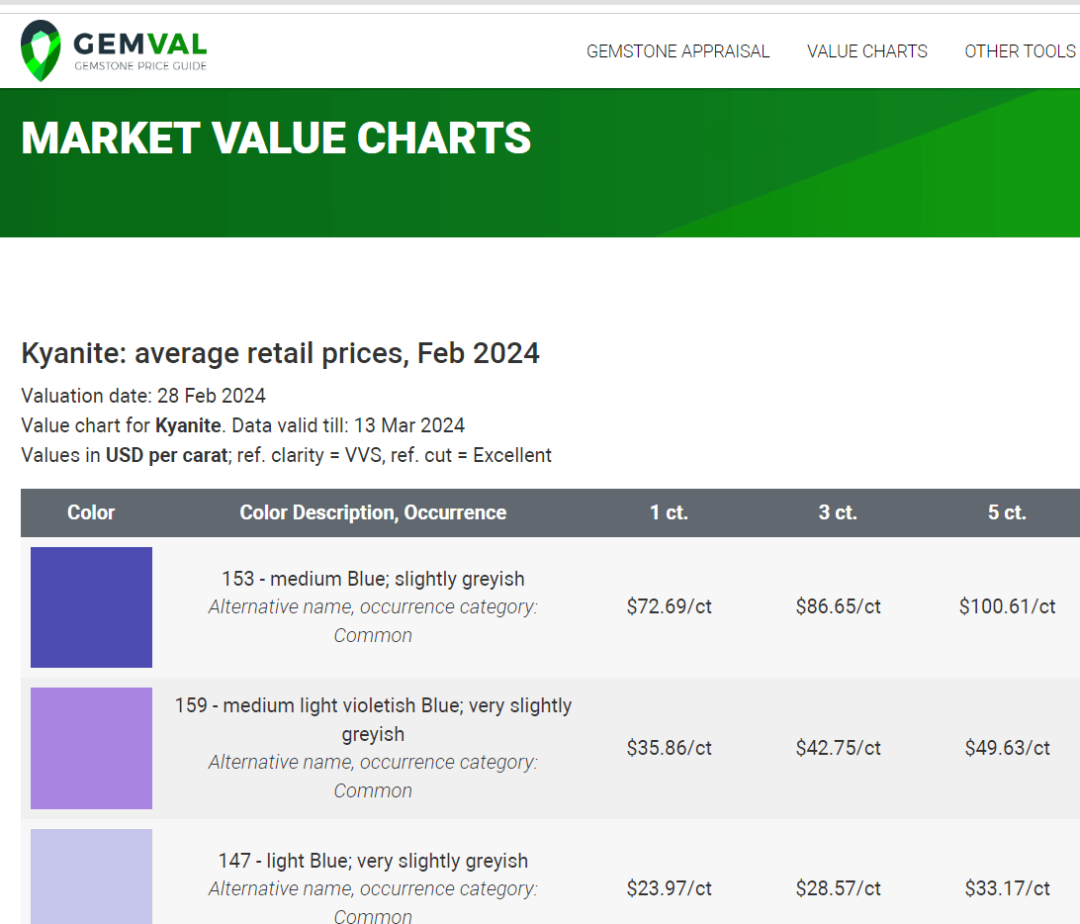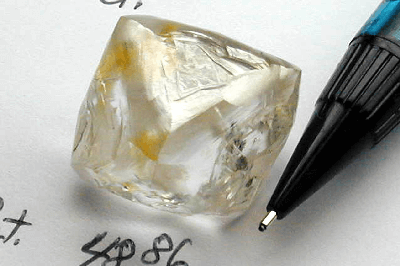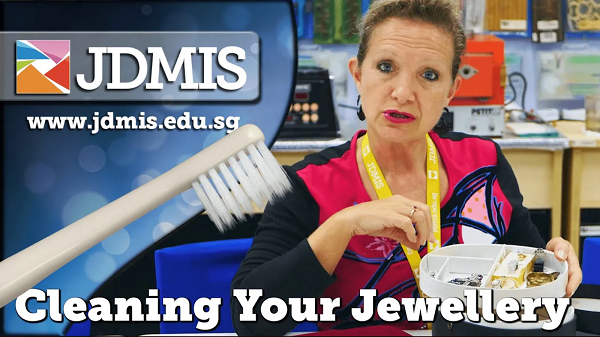Venturing into your first gem fair or shopping trip can feel like stepping into a dazzling yet bewildering world. With rows upon rows of sparkling prospects, how do you ensure that you’re making wise choices and not falling prey to overpriced or counterfeit gems? This cheat sheet made by Tanja Sadow, Founder of JDMIS and renowned gemmologist, can be your trusted companion, designed to arm you with the knowledge and confidence to navigate the bustling aisles of any gem market like a seasoned pro.
Before Your Purchase: What to Check
Conduct Research on who is selling what you want
Before engaging with a gem seller, it’s useful to verify their credibility. Look for a website to check their history, participation in recognized gem fairs, look for professional accreditations, customer testimonials, and any available reviews, especially focusing on their adherence to ethical sourcing and disclosure of gem treatments. This step is imperative in establishing a trustworthy source in an industry where authenticity and provenance are paramount.
When looking to purchase gemstones or precious metals internationally, diligently verifying the seller’s credibility is crucial. Start by ensuring the seller is properly registered and licensed in their respective country, which often requires a search through the country’s commercial registry or a specific agency overseeing the trade of precious items. Additionally, check for memberships in reputable local or global trade associations such as the World Jewellery Confederation (CIBJO) or the International Colored Gemstone Association (ICA), which can be indicators of the seller’s commitment to ethical practices and industry standards. This cautious approach helps safeguard against potential fraud and ensures that your purchase is ethically sourced and complies with international trade regulations.
Understand The Fundamentals of Gem Classifications and Values
Immerse yourself in learning about the specific types of gems you plan to buy. Beyond the Four Cs, familiarize yourself with geological formations, species and varieties, and market preferences affecting gem value. For instance, certain varieties of coloured gemstones, such as Paraíba tourmalines, command higher prices due to their rare hues and origin stories.
Colour: Understand the significance of a gemstone’s colour from Hue to Tone, Saturation/Purity, and how certain colours in gems like rubies and sapphires are more sought after.
Clarity: Recognize that inclusions can sometimes increase a gem’s value, such as unique and unusual minerals captured in host minerals, insects in amber, gold and other coloured rutile needles in quartz or tourmaline and many other interesting and conversational pieces.
Cut: Learn about how certain traditional and modern cutting styles can influence a gem’s brilliance and market price. Understand how carvings can add value to certain types of minerals and see the different options available depending on the opacity or transparency of the material.
Carat Weight: Understand how carat weight influences price not just linearly but geometrically, with some larger, high-quality gems being exponentially more valuable and others being sold at less per carat due to limited demand.
The Four Cs of gems and diamonds is an essential but complex topic in gemmology. If you want to save time on trial and error and receive expert training, you can enrol in our exclusive Gemmology Masterclass taught by JDMIS’ Dean and gem expert, Tanja Sadow.
Research Market Prices
Evaluating price for gems in your market may not be that easy! You could start by looking at international paid services like GemVal or International Gem Society (IGS) but remember these usually require expertise to understand, buying a membership and may not reflect market fluctuations in your country or region. You could also do some window shopping in gem stores to gauge the range of prices on the market in your country. You might also look online to see what price ranges reputable online global gem sellers offer for the items you are interested in purchasing.
Make some notes, and always think about price ‘ranges’ because prices can fluctuate significantly based on factors such as rarity, colour, clarity, etc… Use your research to build an idea of expected pricing across all qualities rather than trying to aim for just one price.
Identify Your Needs
Clearly outline what you’re looking for in terms of gem type, quality, and purpose. Whether for investment, adornment, or education, knowing your criteria helps in navigating offers and discussions with clarity:
For Investment: Focus on acquiring high-quality gems with potential for appreciation. Select gems with excellent colour, clarity, and rarity, ensuring they come with a reputable grading report.
For Everyday Wear: Look for durability and personal appeal. While perfect clarity or colour might be less critical, choose pieces you love and can comfortably wear daily. Gems with good hardness, like sapphires or diamonds, are ideal. For coloured gems, COLOUR should be the key feature. For colourless diamonds CUT should be the key feature.
For Your Collection: Aim for variety. Assemble a collection that covers a broad spectrum of gemmology aspects, from different treatments to unique inclusions, to deepen your understanding. Look for unusual and new minerals on the market which are less known but have the potential to become popular. Look for the BEAUTY in the material.
Approaching the Seller: What to Ask
Ask for Grading Reports
When considering high-value gems, securing a grading report is crucial, but it’s important to note that it’s most relevant for pieces where the value justifies the report’s cost ($80-$200). For utmost confidence in your purchase, opt for reports from trusted laboratories like the Gemological Institute of America (GIA), GemResearch Swisslab (GRS), Gübelin Gem Lab, International Gemological Institute (IGI), American Gem Society (AGS), European Gemological Laboratory (EGL), and Hoge Raad voor Diamant (HRD Antwerp). For gems of lower-value, reputable local laboratories can provide a basic authenticity and quality validation. This selective approach ensures you invest wisely, especially in significant high value purchases.
Inquire About the Gem’s Origin
When inquiring about a gemstone’s origin, it’s vital to go beyond just the geographical location. Request documentation or certifications that provide a transparent trajectory from mine to market, paying close attention to the mining practices and their socio-economic effects on local communities. Country-specific information can hint at the gem’s rarity and potential ethical concerns, such as exploitative labour or environmental degradation.
Today ethical sourcing is pivotal, so ask dealers about the environmental impact, working conditions at the mining site, and initiatives that benefit the local populace. Certifications or ethical labels can be indicative of responsible mining, though one should remain cautious of vague claims. Ultimately, your inquiry into a gem’s origin is a step towards more ethical and sustainable gemstone trade practices, promoting both environmental conservation and community welfare.
Although this is something the trade is more aware of nowadays, be prepared that not all sellers have the answers to this particular question as not everyone has reached this high level of ethics since it will take years for some sellers to do so.
Tips for price negotiation
Especially in the bustling environment of a jewellery show, where all suppliers are gathered in one place, a strategic approach is to do extensive comparison and negotiation to secure the best deals. Start by resisting the impulse to purchase from the first supplier you encounter. Instead, take your time to explore different booths, making notes on pricing and offerings. Engage suppliers in a conversation asking them to justify their asking prices, especially in instances where you’ve noticed lower prices for similar items elsewhere. This approach not just potentially lowers the price but also educates you on the unique qualities of their gems, aiding in future sales conversations with your customers.
Additionally, timing can play a crucial role in negotiation. The final day of the show often brings about more flexible pricing as vendors are keen to sell off their remaining stock. However, exercise this strategy with caution, understanding that it might limit selection, quality or availability. Where possible, offer to pay in cash, leveraging the lack of transaction fees to negotiate a better price. Moreover, establish your price discussions around the volume discount you’re aiming for, creating a foundation to meet at a mutually agreeable price. The pre-show preparation that you have done the previous section coupled with these on-ground negotiation tactics will position you for successful and satisfying gem purchases.
Discuss Lab-grown gems and Gem Treatments
Transparent disclosure about synthetic origins and gem treatments is essential for a fair valuation. Inquire specifically about whether the gemstone is natural or has been created in a lab. If it is natural, inquire what common treatments are relevant to the gem type you are considering, such as heat treatment in sapphires or oiling in emeralds. Have these been applied to the gem you intend to buy and how these affect care and longevity.
Ethical Sourcing and Legal Compliance
It is always good to probe into the seller’s commitment to ethical sourcing, this might be formalised with a certification of non-conflict origins, and adherence to international gem trade regulations (generally for diamonds) or it may be informal, with your seller describing the care they take when sourcing gemstones. An ethical background assures that your purchase fosters positive global and environmental impacts.
Purchase terms
Be sure you understand the costs associated with your purchase and what the seller’s policies are on returns or refunds. By clarifying this before your purchase you will not be surprised by additional credit card charges or unexpected fees. Be sure to keep a clear record of your purchase and, if the gemstone comes without a certificate, request that the details of the gemstone be written clearly on your invoice.
After Purchase: Your Role
Care and Maintenance
Engage with your seller for their professional advice or educational materials on the specific care requirements for your new gems. Proper maintenance is key to preserving their beauty and value, with practices varying greatly across different gem types.
If you want some tips and guide on easier, low-cost methods to clean your jewellery at home, you can watch this 10-min video guide by Tanja, Dean of JDMIS here.
Continue Learning
The gem and jewellery industry is dynamic, with new discoveries, treatments, and market trends continuously emerging. Participate in courses, workshops, and seminars; institutions like JDMIS offer specialized programs that broaden your perspective and proficiency in gemmology and jewellery design.
If you want to find out more and really explore the world of jewellery in more detail, we have a fantastic course called Gem and Jewellery Trade Secrets. It is a comprehensive course that will let you take control over your purchases if you’re a buyer or collector, or if you’re a designer or maker, it’ll help you better understand the gemstones that you’re going to be using in your jewellery.
The program is taught by me, Tanja Sadow, and it is one of our most popular programs. If you can’t make it to Singapore for the hands-on version, you can always join in the online self-paced programme from anywhere in the world!
Good luck on your purchases and Happy Hunting!
Tanja M. Sadow G.J.G.
Dean and founder of the Jewellery Design and Management International School










